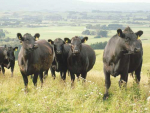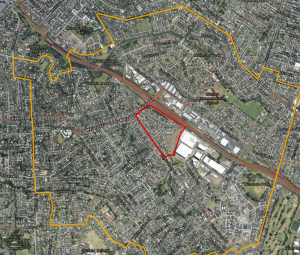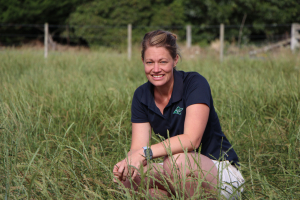Milk prices may have stabilised and will rebound next season, beef prices will hold and horticulture, particularly kiwifruit, could be the star performer this year.
Amid his crystal ball gazing for 2015, ASB rural economist Nathan Penny says the bank is still holding its $4.70/kgMS forecast – which it predicted for this season before Fonterra moved there as well. But the ASB predicts a rebound to $6/kgMS next season, comparing it to a similar cycle in 2010-2012.
“We think things have stabilised and are on the up, given that production is slowing and exports are coming back from the different major exporters. The initial signs are that supply is coming back to meet demand which is bit weak in places like China and now some of the oil producing countries. We will stick with that $4.70/kgMS for now. But we wouldn’t rule out lower.”
With drought risk and beef prices still high, although back from November’s records, it will make sense for dairy farmers in some regions to dry off early and cull poor performers. Production will slow quickly later into the summer and early autumn.
Penny says beef prices are likely to hold this season and into the next with the US still rebuilding its herd.
He predicts that lamb will probably go sideways this year. Europe and China are weaker on the demand side. Australian’s sheep sector is still struggling so there won’t be much lamb coming through until later in the season. Production-wise New Zealand is only looking at about 1% increase in lamb production.
“Wool prices have weakened this year and may still do so given Europe, China and Japan are all weaker.”
He says horticulture has more momentum, particularly with the Psa recovery. Production is rebounding for Gold and prices are holding up. “Kiwifruit along with wine are probably the areas with the most momentum.”
The New Zealand domestic economy is good whereas in the world economy China is in a soft patch, and Europe and Japan are still struggling to fix themselves. China’s problems are temporary, the others are longer term. The US is doing reasonably well.
“With the exception of dairy, which is hitting a lean year, domestically things aren’t too bad and activity is pretty strong.
“Some of our exports markets in agriculture are a bit weaker than they have been but medium and long term that story still holds for emerging economy demand,” Penny says.
“We are confident in the medium and long term prospects for agriculture, there are some things to work through this year and dairy farmers particularly will need to be diligent and manage through that and get advice with a view that things
will rebound next season and beyond.”
He says the sheep and beef sectors are doing better and the medium prospects are positive.
OK is actually good!
ANZ’S CHIEF economist Cameron Bagrie stands by his recent comments that 2015 will be a year of “pure economic expansion” despite the low milk payout.
“I think there is enough petrol in New Zealand’s tank to handle one year of a sub-par dairy payout,” he told Rural News. “I’d be more cautious if it was to be two years of a sub $5 payout.
“At the moment the central case seems to be that we will see a bit of a rebound. If that rebound doesn’t eventuate I will alter my economic assessment. Outside of dairying our commodity prices generally are doing pretty well.”
Bagrie says New Zealand’s growth is slowing but from a gallop to a canter. He says when the economy falls into a hole as in did in 2009-10, the recovery is called growth but it takes longer for activity to reach a broader level and that’s economic expansion. That’s what he now sees.
“Things out there are still a bit grumbly but if I compare New Zealand to most of the OECD or across the Western World – boy, we look pretty solid.”
New Zealand’s economy has challenges but those look manageable. Dairy is having a tough time and there are drought concerns in some regions. Retail is another sector that’s not great.
“With the economy in general we are not knocking the ball out of the park but we are doing ok,” Bagrie adds. “And ‘ok’ compared to an awful lot of places around the globe is the modern ‘spectacular’.”



















